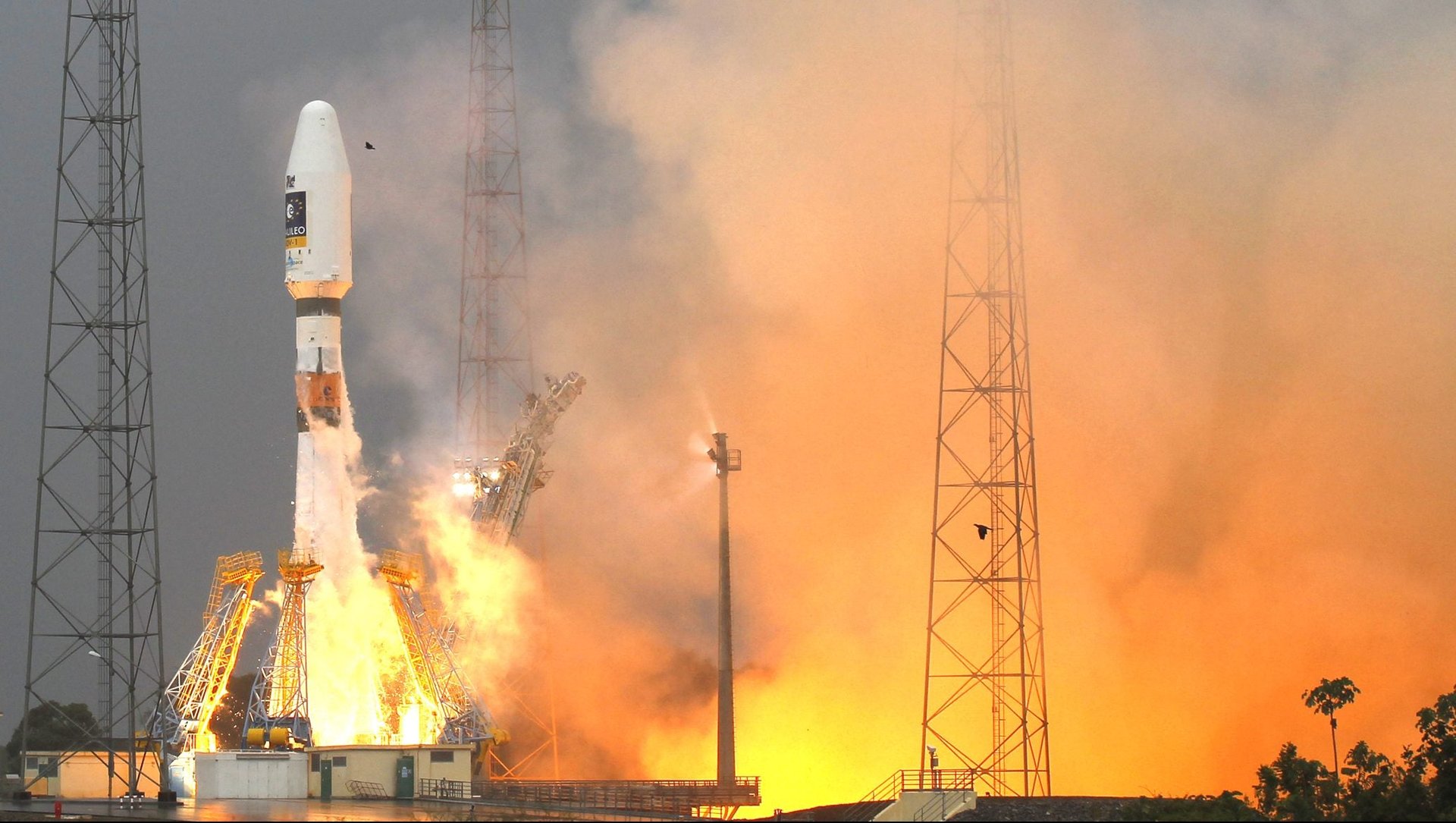Europe has launched a new satellite navigation system that will be precise down to a few centimeters
We tend to use “GPS” the way we use “Kleenex” or “Band-Aid”—as a brand name substitute for the generic “satellite navigation system.” But the Global Positioning System is actually quite specific: It’s a constellation of 27 satellites and a global network of control facilities on the ground developed and operated by the US Department of Defense.


We tend to use “GPS” the way we use “Kleenex” or “Band-Aid”—as a brand name substitute for the generic “satellite navigation system.” But the Global Positioning System is actually quite specific: It’s a constellation of 27 satellites and a global network of control facilities on the ground developed and operated by the US Department of Defense.
There are other sat-nav systems, though, and since 2011, most sat-nav consumer devices, including Apple’s and Samsung’s, have receivers for both the US’s GPS and Russia’s Global Navigation Satellite System (GLONASS)—a 24-satellite network operated by the Armed Forces of the Russian Federation. (There are other regional systems, like the Indian Regional Navigation Satellite System and China’s BeiDou Navigation Satellite System; but GPS and GLONASS are the only fully global networks.)
Besides helping you find the nearest coffeeshop, this combined sat-nav system also makes the economy run efficiently, powering key aspects of sectors ranging from farming and mining to the financial markets and power grids that rely on the system for precision time syncing. It’s completely free to use and it works great; anyone with a GPS and/or GLONASS receiver can find their exact position on Earth, accurate to about a dozen feet.
Now, Europe has decided it can do better. After 17 years of development and billions spent, on Dec. 15, the European Union flipped the switch and turned on Galileo, its own satellite navigation system. Right now, it includes 18 live satellites, but by 2020 there will be 24—and when the system is at 100%, it should be accurate to within three feet, AFP reports. There will also be a sort of “professional” version of the system that, the European Space Agency says, will be precise to within centimeters. In large part this is thanks to the mind-boggling precision of the atomic clocks carried on their satellites, which are accurate to one second in 3 million years.
All that is fantastic, but perhaps the most important part about Galileo has nothing to do with technology. What really matters: It’s the first sat-nav system managed by civilians.
GPS is a US military invention developed during the Cold War. It was launched in 1978 and remains under the operational control of the Air Force Space Command. Likewise, GLONASS is controlled by the Russian Aerospace Defense Forces.
Galileo unshackles European citizenry and industry from the US and Russian systems, and, as AFP points out, gives Europe security from potential strategic restrictions—such as in times of war. In 2014, for example, the Kremlin threatened to shut down US GPS receivers on Russian soil in response to disputes over Russia’s annexation of Crimea. In a time of particularly acute global political uncertainty, Galileo offers real technological security.
As a civilian-run system, it also puts civilian needs first—unlike GPS, which offers more accurate services to the US military. Galileo also offers specific amenities to government agencies, like an encrypted channel for emergency services.
It’s not quite there yet—for now, only devices with Galileo-specific receiving chips can pick up the signal, and there are still six more satellites to launch. But when complete, it’ll likely be the best of the three global positioning systems. Eventually, most consumer devices with sat-nav built in will likely include Galileo receivers. Already, all cars manufactured in Europe will be required to have them by 2018.
So really, the commencement of Galileo is a boon to us all. Whatever Donald Trump or Vladimir Putin decide to do, we’ll still be able to find our way home.